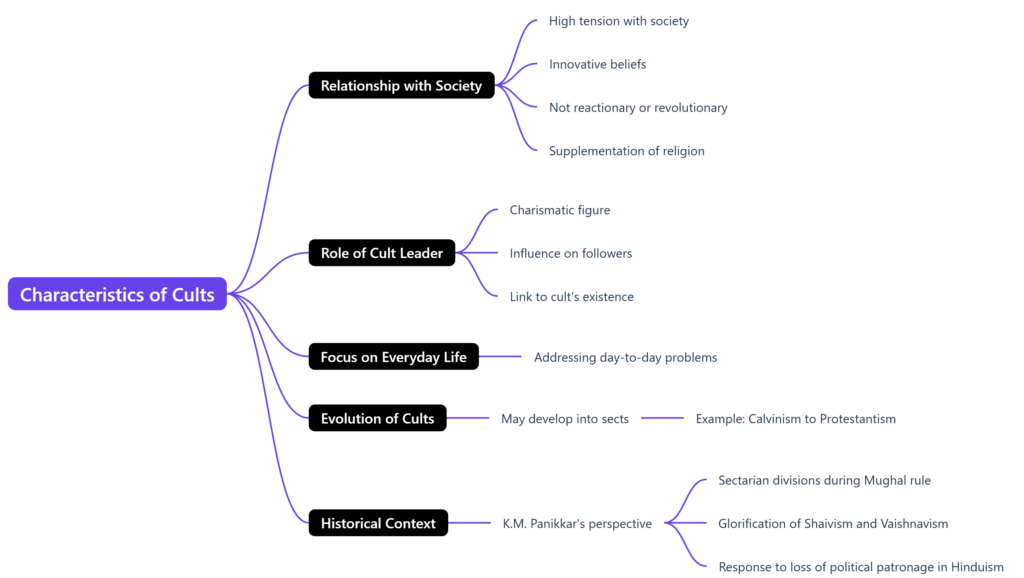What is the Cult?
(Relevant for Sociology Optional UPSC)

The cult
The concept of “cult” was introduced into sociology in 1932 by American sociologist Howard P. Becker as an expansion of German theologian Ernst Troeltsch church-sect typology. Troeltsch aim was to distinguish between three main types of religious behavior: churchly, sectarian and mystical.
Becker created four categories out of Troeltsch first two by splitting church into “ecclesia” and “denomination”, and sect into “sect” and “cult”. Like Troeltsch “mystical religion”, Becker’s cults were small religious groups lacking in organization and emphasizing the private nature of personal beliefs.
- Later formulations built on these characteristics while placing an additional emphasis on cults as deviant religious groups “deriving their inspiration from outside of the predominant religious culture”. This deviation is often thought to lead to a high degree of tension between the group and the more mainstream culture surrounding it, a characteristic shared with religious sects.
- The term often highlights smaller religious movements or movements involving particularly intense religious devotion. The cult is a voluntary organisation open to all who wish to join or participate in it. According to Johnson, A cult emphasizes one doctrine (above all others) or it focuses upon a God or Goddess with certain definite characteristics.
What are the Characteristics of Cult:

- A cult, also has a high degree of tension with the surrounding society, but its beliefs are (within the context of that society) new and innovative.
- Cults are not reactionary or revolutionary but instead are revisionary. Cult does not stand opposite to religion.
- Cult is a supplementation of religion than being a challenge to religion.
- Cult’s existence is greatly linked to life span of cult leader. He or she is a charismatic person for his followers.
- Cults are engaged in catering to day-to-day problems of people.
- Over a period cult may develop into a sect i.e. Calvinism to Protestantism.
- In Indian society, according to K.M. Panikkar it was during Mughals rule that sectarian division among Brahmins was greatly glorified i.e. Shaivism and Vaishnavism, because Hinduism was loosing its great tradition because of loss of political patronage.
How did the concept originate?
- Sociologists still maintain that unlike sects, which are products of religious schism and therefore maintain continuity with traditional beliefs and practices, “cults” arise spontaneously around novel beliefs and practices.
- The social reality of cult is essentially rooted in heroic act. This act is a system of worship, a complex of feeling and attitudes of symbol (gestures, words, rites and rituals) and primarily a relationship with sacred object and the world beyond. It involves co-activity and a social boundary. In it, the relationship between the deity and clergy is not negligible but secondary.
- Cult seems to flourish in metropolitan centres where culturally heterogeneous populations are thrown together and they widely feel the impact of most rapidly impinging social change. It crates situation of contingency and powerlessness and thus the problem of adjustment. The cult of meet that situation.
|
To Read more topics like What is the Cult? in Public Posts, visit: www.triumphias.com/blogs
Read more Blogs:
India third most vulnerable country to cyber threats
China Announces Fresh Retaliatory Tariffs on US Goods




2 comments